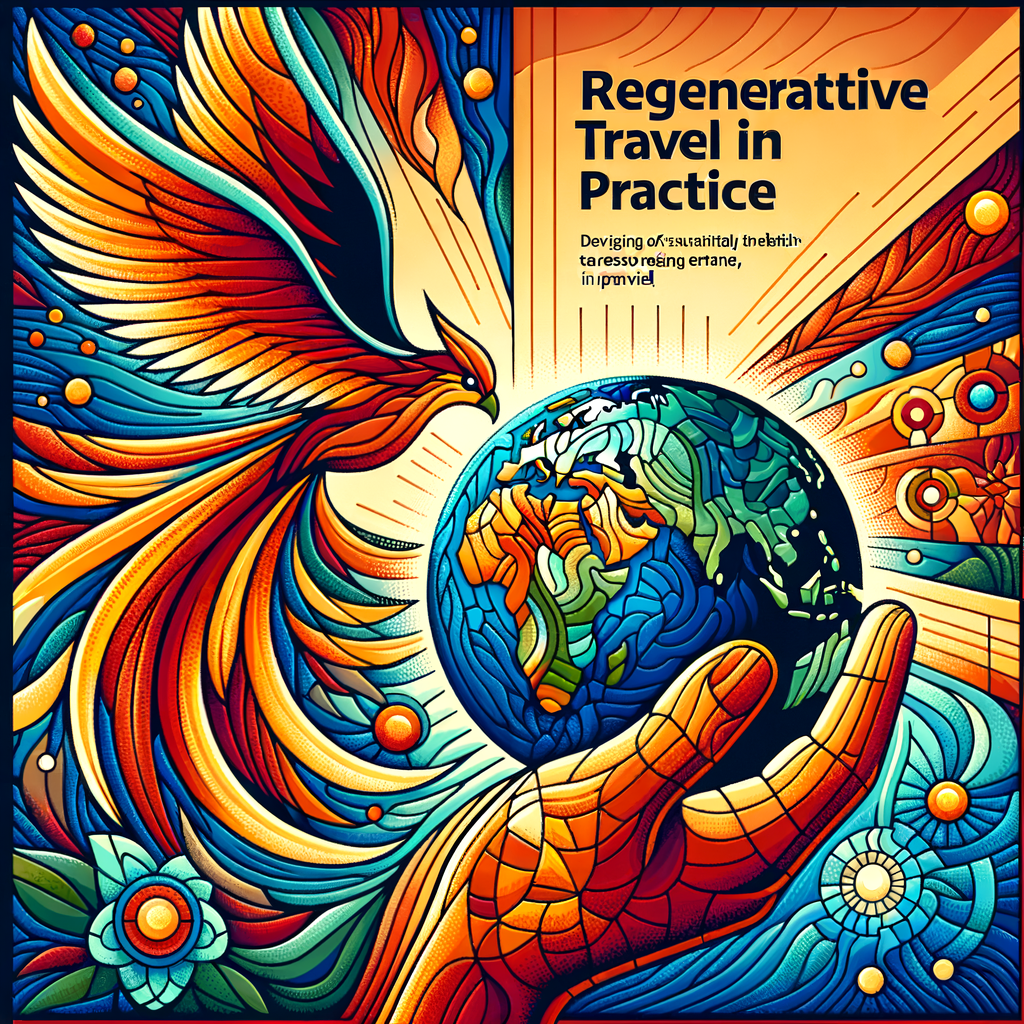Understanding Regenerative Travel: A Holistic Approach to Tourism
 Levi M Hankins
Levi M Hankins
Article One
Introduction:
Welcome to the first article in our series exploring the transformative concept of regenerative travel. In an era where tourism's impact on the environment and local communities is under scrutiny, regenerative travel offers a promising path forward. But what exactly is it, and how can it benefit the places we visit and the people who call them home? In this article, we will delve into the principles of regenerative travel, grasp its differences from sustainable travel, and understand why it has become a crucial aspect of responsible tourism.
Defining Regenerative Travel:
Regenerative travel goes beyond the simple act of exploring a new destination. It is a mindful and proactive approach to tourism that aims to leave a positive, long-lasting impact on the environments and communities we engage with during our journeys.
While traditional tourism can often be extractive, regenerative travel strives to be restorative and regenerative, hence its name.
Key Principles:
The foundation of regenerative travel rests on several key principles that set it apart from conventional tourism:
Reciprocity and Relationship-Building: At its core, regenerative travel emphasizes the importance of mutual benefit and respect between travelers and local communities. It encourages the development of genuine connections and a sense of shared responsibility.
Environmental Restoration: Regenerative travelers actively seek opportunities to enhance and restore natural environments, recognizing that tourism can play a pivotal role in conservation efforts.
Community Empowerment: This approach prioritizes the voices, needs, and aspirations of local communities. By involving them in decision-making processes, regenerative travel ensures that the benefits of tourism are equitably distributed.
Long-Term Sustainability: Rather than focusing on short-term gains, regenerative travel adopts a future-oriented perspective. It aims to create lasting positive impacts that contribute to the resilience and well-being of destinations over time.
Regenerative Travel vs. Sustainable Travel:
To understand regenerative travel more clearly, it is helpful to compare it with the concept of sustainable travel. While sustainable travel aims to minimize negative impacts on the environment and local cultures, regenerative travel takes it a step further. The goal of regenerative travel is not just to reduce harm but to actively contribute to the regeneration of ecosystems and communities. It challenges travelers and the tourism industry to leave destinations better than they found them.
Case Studies: Bringing Regenerative Travel to Life
Community-Based Tourism in Peru
In the Sacred Valley of Peru, a group of indigenous communities has come together to create a regenerative travel experience. Visitors are invited to immerse themselves in the local culture, staying with host families and learning about ancient traditions. Through this initiative, travelers contribute directly to the economic empowerment of these communities, and the funds generated support local education and environmental conservation projects.
Restoring Nature in New Zealand
A group of eco-lodges in New Zealand's South Island has implemented a regenerative travel model focused on environmental restoration. Guests are invited to participate in conservation efforts, such as tree planting, wildlife monitoring, and habitat restoration. By involving travelers in these initiatives, the eco-lodges are not only reducing their environmental impact but also actively contributing to the regeneration of the region's unique ecosystems.
Cultural Preservation in Italy
In a small town in Tuscany, Italy, a non-profit organization has developed a regenerative travel program centered around cultural preservation. Visitors are immersed in the local way of life, including learning traditional crafts, participating in culinary workshops, and contributing to the restoration of historic sites. This initiative not only provides economic benefits to the community but also ensures the survival of their rich cultural heritage for future generations.
In Conclusion:
Regenerative travel offers a refreshing and much-needed perspective on tourism, challenging us to consider the deeper impacts of our journeys. By adopting its principles, travelers, tourism businesses, and communities can work together to create positive change.
As we continue this series, we will delve into the specific benefits that regenerative travel brings to local economies, the opportunities it presents for cultural exchange, and its potential to foster inclusivity, especially for queer travelers seeking welcoming destinations. In our next article, we'll explore how regenerative travel practices can revitalize local economies and create sustainable livelihoods for communities around the world.
Subscribe to my newsletter
Read articles from Levi M Hankins directly inside your inbox. Subscribe to the newsletter, and don't miss out.
Written by

Levi M Hankins
Levi M Hankins
Passionate traveler and storyteller, dedicated to celebrating the spirit of adventure and community within the LGBTQ+ travel sphere. With a keen eye for luxury and a heart for sustainability, I aim to inspire and inform through captivating narratives and stunning visuals. Join me as we explore the world with pride and purpose, fostering a sense of belonging and empowerment for all.